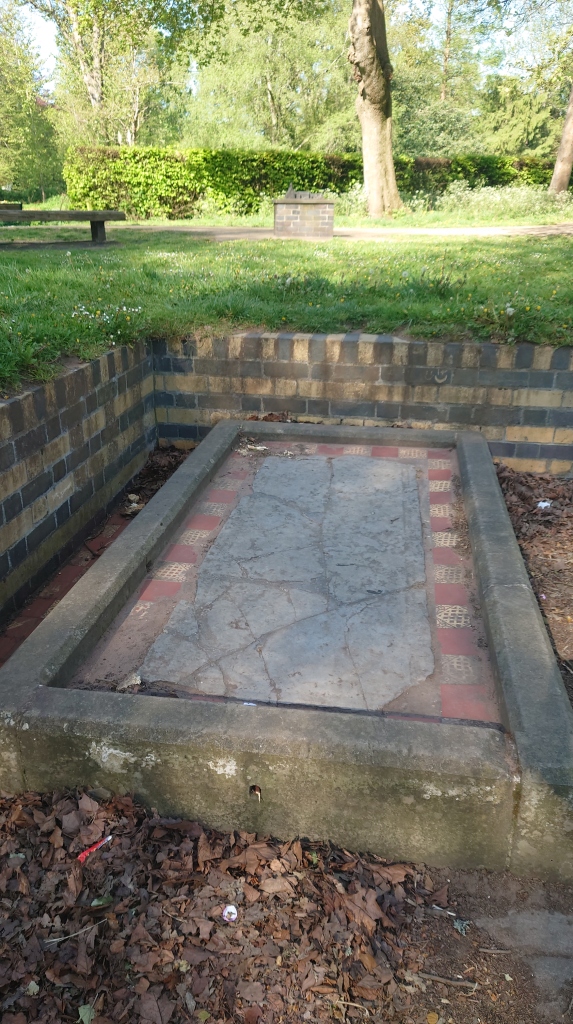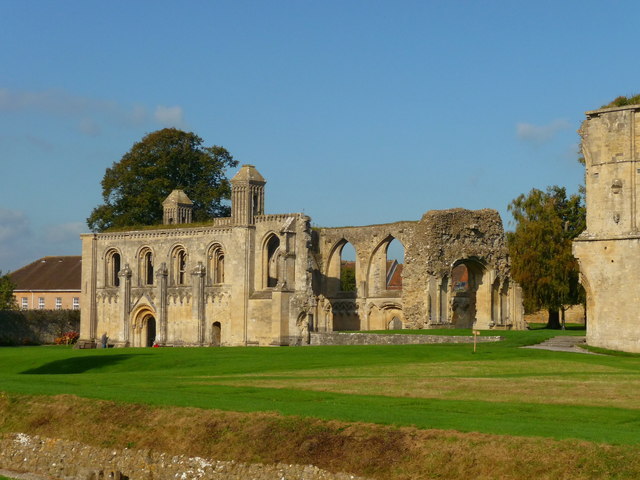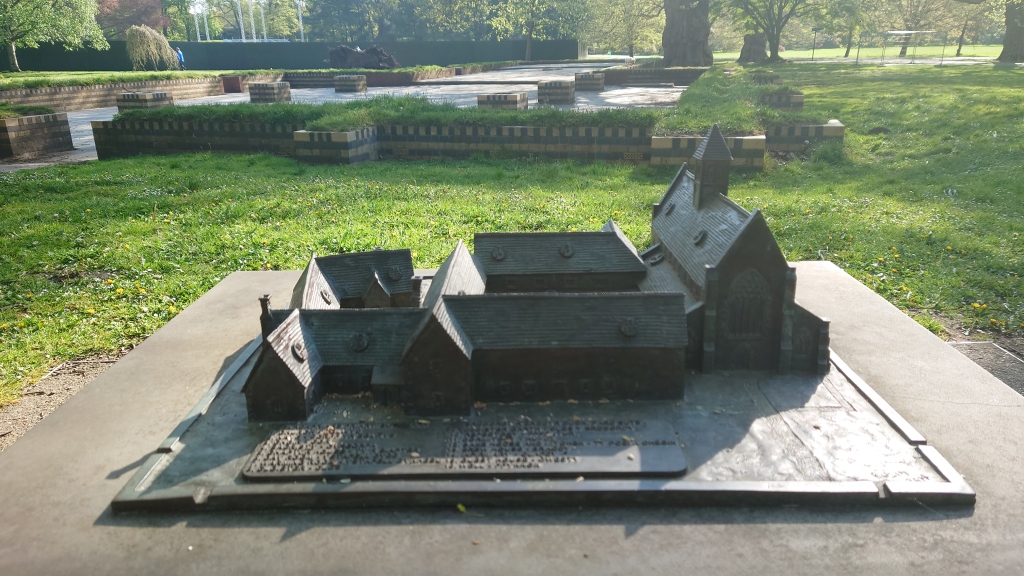
As the media and music scenes converge on the Somerset Levels this month for the Glastonbury Music Festival, bringing with them legions of revellers that leave a trail of discarded wellies and broken tents in their wake, attention inevitably returns to the town’s connections with Arthurian Legend, and the quest for the Holy Grail. Whilst there is something undeniably legendary about the way that the town has cultivated its mystical and spiritual status for centuries, what is less than certain is whether it has any basis in fact. What is more interesting is that a Twelfth Century Welsh historian may have conspired to create the Glastonbury myth, possibly to conceal the truth that St Joseph of Arimathea, who allegedly brought the Cup of Christ to the British Isles, may in fact have found his final resting place in Wales rather than England.
An early convert to the Jesus movement, Joseph of Arimathea is sometimes claimed to be Jesus’ uncle. A rich merchant from the Judean Hills bordering Samaria, it was in his tomb that Jesus of Nazareth was interred following the Crucifixion. It was Joseph of Arimathea who was said to have held the cup that collected the blood of Christ on the cross, a vessel also identified as the cup used during the Last Supper as recorded in the New Testament. The conventional narrative then has Joseph visiting Britain in the years after the Resurrection, tasked by Philip the Apostle with spreading the Gospel in the Northern provinces of the Roman Empire. Joseph is believed to have settled in the vicinity of Glastonbury, planted his staff on nearby Wearyall Hill, where it took root as the Holy Thorn that remains in the town to this day. He is also believed to have founded the first Christianity community in the town, which grew to become Glastonbury Abbey.

The renowned scribe Gerald of Wales (the subject of a cartoon film narrated by Max Boyce, which itself achieved legendary status among Welsh schoolchildren of the late Eighties and early Nineties) wrote at the end of the Twelfth Century that he personally witnessed the discovery and exhumation of the remains of the legendary King Arthur and Queen Guinevere at Glastonbury Abbey. Much has been said about the convenience of the discovery following a fire at the Abbey that required expensive repairs. That announcement identified Glastonbury with the mythical Island of Avalon, named for the Welsh word afal (apple) and the area instantly became associated with the Arthurian quest for the Holy Grail, birthing a tourist tradition that has become a micro-industry all of its own.
The notoriety that the Abbey enjoyed following the Arthurian discovery was indeed lucrative, but even today there is much doubt as to whether Gerald of Wales was actually an eyewitness or whether his account is hearsay. Fast forward a few centuries to the year 1538, and the Dissolution of the Monasteries by Henry VIII following his schism with the Church in Rome, and the relics of Arthur and Guinevere had mysteriously disappeared. Glastonbury Abbey was unable to provide physical evidence to substantiate its Arthurian claim, and yet the legend endures to this day.

Even today, Glastonbury is world-renowned for its aura of mysticism, its convergence of ley lines, and yes, its lucrative arts and music festival at Worthy Farm. The town enjoys a healthy reputation for welcoming the pagan community and those with new age interests, despite the fact that its foundation is primarily Christian. The tradition is so strong and enduring that even in today’s sceptical times, it is still a draw for grail questers, fans of Arthurian legend, neo-pagans, Celtic enthusiasts, contemporary druids and the like.
Some thirty-two miles North-West of Glastonbury as the crow flies, nestled in the ruins of Blackfriars Priory in Cardiff’s Bute Park is a gravesite that tells a rather different story. Tucked away in the South-Western corner of the Priory’s Chapel of St. Mary lies a rectangular unmarked tomb, hemmed in by coloured tiles and topped with cracked concrete. It lies, quite unnoticed, in the shade of the nearby trees, more often than not in a drift of fallen leaves. People walk, run, and jog past, unaware of its existence. Children play on the recently-installed musical chimes nearby, lending the site an ecclesiastical atmosphere that eerily recalls the days of the Priory in its prime. Very few people who pass by realise that here, in this unassuming plot, hiding in plain sight in the centre of Cardiff, may rest the mortal remains of Joseph of Arimathea, the keeper of the Cup of Christ.
In his book, Maelgwn of Llandaff and Joseph of Arimathea, author Michael A. Clark draws on the works of M. A. Kelly to present the case for Joseph of Arimathea having been buried in South Wales. Prince Maelgwn of Llandaff, a village all but absorbed into the Northern suburbs of today’s Cardiff spoke of “Joseph of Arimathea the noble decurion, received his ever lasting rest with his eleven companions in the Isles of Avalon”, identifying the grave as lying “in the Southern angle of the bifurcated line of the Cratorium of the adorable virgin.” The Chapel in the ruins of Blackfriars Priory in Cardiff’s Bute Park was dedicated to St Mary the Virgin Mother, and indeed contains a tomb in the location described.
Maelgwn died around the year AD 547, yet although popular myth claims the monastic community at Glastonbury was founded by Joseph of Arimathea some time in the 1st Century AD, history actually records the Abbey as being founded in AD 712, over two centuries following Maelgwn’s death. It is therefore highly unlikely that Maelgwn was referring to Glastonbury as the “Isles of Avalon” where Joseph of Arimathea is buried. Given that Maelgwn lived less than a mile from the pre-existing religious community at the Blackfriars site, this is a more logical location.
There has been much debate on the identification of Avalon as an island. The purported Glastonbury theory rests on the suggestion that, prior to the monastery’s work in draining the land in the Middle Ages, much of the surrounding area was seasonally submerged, and so Glastonbury Tor and its immediate surroundings could be classed as an ‘island’ in the Somerset Levels during the winter months. The proposal for the site to have actually been in the centre of Cardiff rests on the fact that the River Taff which flows through the city actually breaks off at Blackweir, North of Bute Park, with the smaller river flowing East of the park to the walls of Cardiff Castle where it disappears beneath the city.
Over time the urban growth of Cardiff has altered the course of the river, but maps from both the 1600s and 1800s clearly show the smaller river rejoining the Taff South of the Castle, thereby making the land in Bute Park a literal island in the river. Today, the smaller river forms part of the Dock Feeder Canal, which disappears beneath the city streets North of nearby Greyfriars Road, and reappears South of the city centre. The City of Cardiff has announced plans to excavate and ‘reinstate’ much of the Dock Feeder Canal as a “Canal Quarter” with waterside cafes and restaurants which would boost the tourist trade.
Cardiff may enjoy a similar boost to tourism from the identification of the Blackfriars site with Avalon. An excavation of the tomb in 1879 discovered multiple skeletons: all but one were female. The male skeleton appears to have been the earliest burial, as it was found the furthest into the ground. If it were indeed the body of Joseph of Arimathea, the use of the grave to inter multiple women at a later date supports the romanticised tradition of Avalon being a community of Celtic/Brythonic priestesses following the Roman withdrawal from Britain during the centuries following Joseph’s relocation from the Holy Land. If the theory were publicised, Cardiff might benefit from the kind of Grail Quest tourism that is enjoyed by the likes of Glastonbury, and Rennes-le-Chateau in France.
Of course, in order to publicise the theory and use it to promote tourism, it would have to be tried and tested. The remains at the gravesite in Bute Park would have to be exhumed once again, and most likely tested for any traces of DNA or other elements that might help to narrow down a location for the birth and life of the man buried there. If the remains are remotely connected to the Holy Land, it would help to corroborate the theory; if they were connected to Britain or somewhere nearby in Europe, then we could safely assume that the bones to not in fact belong to Joseph of Arimathea. Exhuming skeletal remains to test them for tourism purposes creates a moral and ethical dilemma, so for now the site creates a paradox of near-Schrödinger proportions: until proven one way or the other, the theory is both true, and untrue.
What interests me more, is whether Gerald of Wales was aware of the purported burial of Joseph of Arimathea in Cardiff. As the son of an Anglo-Norman lord and the grandson of Rhys ap Tewdwr, the last King of South Wales, Gerald would undoubtedly have had some knowledge of the history of his country. He was a royal clerk and chaplain to King Henry II, and travelled as far as Rome where he met the Pope, and was a member of the Benedictine Order, which preserved Greco-Roman culture after the fall of the Roman Empire. This background would have provided him with access to regal and religious records dating back to the earliest days of Christian culture, and its spread through the Roman Empire.

Blackfriars in Bute Park was established some thirty years after Gerald’s death, but the ruins that remain today may have been built over a pre-existing site. The Dominican Order which inhabited the site was newly-formed during Gerald’s era, and was branching out across Christendom, establishing new sites as it spread. Whatever the site was prior to the Dominicans building there, Gerald would have likely been aware of it. If he was aware of the site and its importance, why did Gerald of Wales identify Glastonbury as the site of Avalon? I find myself wondering if he fictionalised his account of the ‘discovery’ of the remains of Arthur and Guinevere to create the Glastonbury myth as a distraction from the true site in Cardiff.
If that is the case, then by all means visit the site in Bute Park in Cardiff, but don’t tell everyone. If Joseph of Arimathea is indeed buried there, he has lain in relative peace for almost two thousand years, whilst Glastonbury became a thriving centre of neopaganism, neodruidism and modern Celtic mysticism. If Bute Park is indeed the Arthurian Isle of Apples, then let’s keep that to ourselves, so that the grave site at Blackfriars remains undisturbed.
